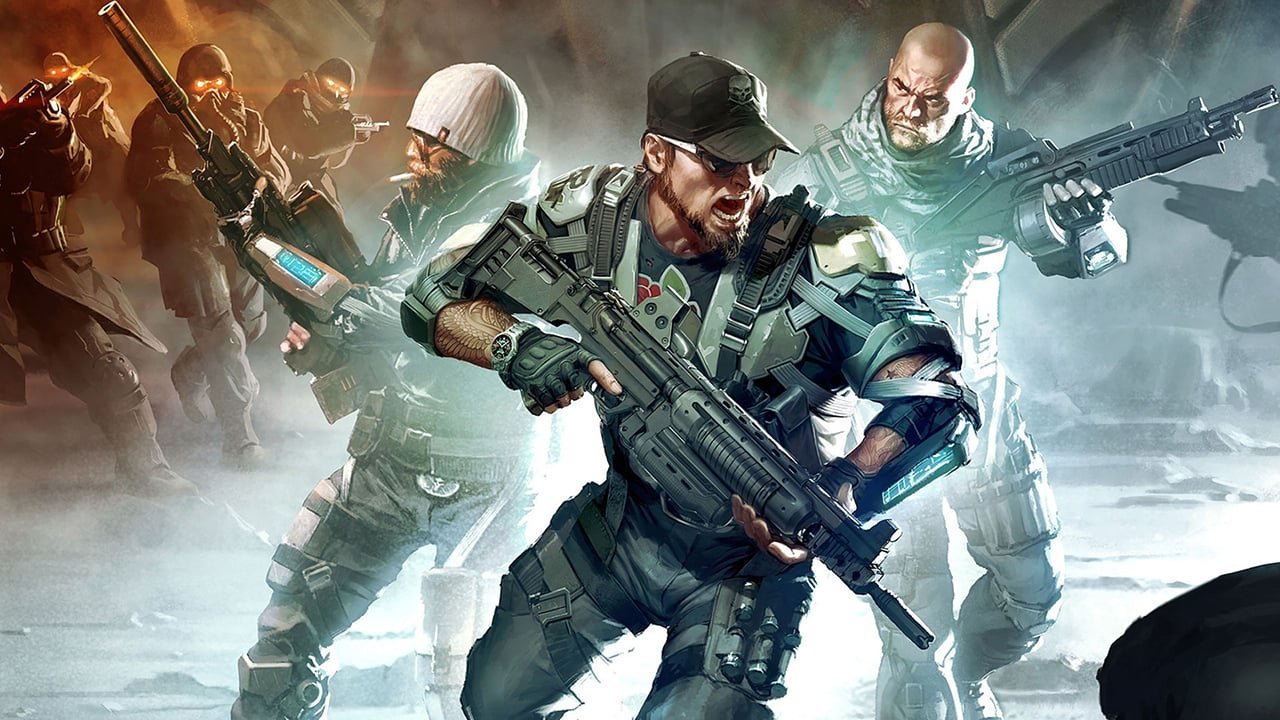The FPS has so far had an underwhelming time on the PlayStation Vita. Sure, we’ve had the likes of big brands like Call of Duty and even Sony’s own Resistance franchise appearing on the diminutive platform, but those projects were always farmed out to less established, “B Team” studios that created games that compared poorly to their console ancestors. Now Sony has tried to step in to fix that with Killzone: Mercenary, and while it’s still not Guerilla Games proper, the new Cambridge team has succeeded where others failed; they’ve made a pretty good—but not amazing—FPS experience on the Vita that has everything you’d expect, including multiplayer.
Blood Money
Killzone suffers the problem of having some passionate people create a compelling backstory that is then never adequately explored in the main game. Guerilla Cambridge tries to remedy that somewhat in this story of Arran Danner, merc for hire. His missions occur during the same period as Killzone and Killzone II but never actually cross over into direct participation in events from those games. As a hired mercenary, Danner (who is mute) walks a morally ambiguous line with some interesting plot twists that never feel earned. There’s a forced sensibility to the plot developments, but at least the game is trying to tell more than a “good guys good, bad guys bad, so shoot the bad guys” story.
Getting into technical details, what we find here is a showcase of the Vita’s power. This is, without a doubt, the most technical impressive game for the handheld yet. It’s been said already, but it bears repeating; it’s easy to forget that you’re playing this on a portable device. The graphics, while not up to the fidelity of Killzone II or its sequel, look crisp and detailed on the Vita’s small screen, and for the most part, the frame rate holds up. It’s an impressive vote of confidence for the Vita’s power, but it also comes at a price; this thing eats up battery life like nothing else on the system. It doesn’t seem possible to play it for more than two, perhaps two and a half hours before the Vita is in dire need of a recharge. So while playing this for short commutes is certainly possible, longer trips will require keeping the AC adapter on standby. The art direction is what we’ve come to expect from the series; mostly muted tones, reverting to the drab, grey world of Killzone II rather than the more colourful world of its sequel. Heavy asset re-use is also prominent, with many of the same soldiers from the console versions appearing here in all their shameless SS-inspired glory. Classic props like the ISA bomb and even the animation for helping fellow soldiers up to higher platforms also make a return, so it’s obvious that Guerilla Cambridge had full permission to raid Guerilla Game’s libraries during the development of Mercenary.

The audio is probably the one area where there’s a big difference. The score still feels bombastic and orchestral at times, and the firearms retain their signature sounds, but all of this is fed through either headphones now, or the small speakers of the Vita. This is definitely best played with headphones, for more “oomph,” but even then, the house shaking, bass-y explosions and the multi-directional audio have lost a lot in the translation to a portable. The voice acting is serviceable but never particularly good. It doesn’t help that the voice actors don’t have a great script to work with, but with a mute character and some arch British and Russian accents, the quality of the acting here has a late 90s feel. You’ll never encounter a “Jill Sandwich” moment, but neither is there anything as remotely memorable as GLaDOS. The writers occasionally fail to restrain themselves from using bad puns and/or references, but these are kept to a minimum.
Shooting In Hand
This is, to some degree, damning with faint praise, but it’s true that Killzone: Mercenary is currently the best FPS on the Vita, partially because the others are subpar. It’s not a long game, with nine campaign missions that can be finished in four to five hours. That would be alarming by $60, retail release disc standards, but for $40 on the go, with multiplayer, that’s quite reasonable. The controls still have the same weighty feel as the console versions, which some will love and some will hate. There’s also been some touch screen integration built in, though much of it can be turned off, except for zooming on sniper scopes, which requires an up/down swipe motion on the rear screen to work. It’s unobtrusive though, so it actually works to the game’s benefit. All of these tweaks are just that, however. The big change to the nature of the game is the central mechanic, and that is, appropriately for a merc, making money.
The key to Mercenary’s longevity in single player is the repeatable nature of the missions, and the “gear RPG” nature of the game. All actions in the game, from picking up ammo to stabbing enemies, will reward players with money. The money can be used to purchase new gear such as weapons, armor and special attacks in the form of a “Vanguard system,” and the type of gear Danner equips will have an effect on the playstyle. In some ways, this is reminiscent of Ubisoft’s recent tweaks to Splinter Cell, with Mercenary’s gear choices giving players options to load up for all-out assault, take a more stealthy approach, or even emphasize the use of gadgets. The missions even pay out different amounts of money for meeting the requirements for various stealth/assault/whatever conditions, which means using specific weapons and gear as defined by that playstyle parameter. One interesting aspect of this is how the player can actually change loadout/playstyle even during the mission itself. “Vendor chests” are scattered liberally through each mission, and, if there’s enough money on hand—it costs $250 to re-equip an individual piece of gear, so armor, primary/secondary weapons, grenades and special total up to $1250—players can completely reconfigure Danner for a new playstyle. This is often a necessity as the game can change the nature of the approach called for. All playstyles are valid, and any mission can be stubbornly completed with one playstyle if players choose, but it’s often easier—and more fun—to try and complete missions the way the game encourages you to.

For example, a mission may start encouraging a stealthy approach, with fewer guards a nice bonus for sneaking—or killing—undetected. Infiltration armor and cloaking abilities come into heavy use during this phase, but later in the level, a confrontation is forced, at which point, it’s more prudent to hit the vendor chest and switch things up for ballistic armor and greater firepower. With more money—likely gained by grinding missions—players can graduate to even more lethal weapons, like rocket launchers and even satellite directed attacks. All of this, incredibly, carries over to the multiplayer.
Multiplayer is both impressive and at the same time somewhat crippled. The good news is that it covers most of the fundamentals, with free for all deathmatch, team deathmatch, and objectives based matches that resembles the console modes. This is fun, chaotic, and once again recalls that “I can’t believe this is on a portable” feeling, provided there’s access to a decent Wi-Fi connection. The downside to this is that, unlike the PS3 version, there’s no dedicated player chat, although the Vita’s party chat works just fine. So, you can talk to your friends who are already on your party chat/friend list, but you can’t strategize with people you just met on your team for the latest match. There are understandable technical limitations for why this is the case, and for some, it may be a deal breaker, but the fundamental multiplayer gameplay actually WORKS.
Ultimately, Killzone: Mercenary is a big “Yes,” for anyone looking for a decent FPS to play on the go. The dual analog sticks of the Vita make this the single most playable FPS on the portable market, and the decent campaign and surprisingly good—but hamstrung—multiplayer adds legs to the game. This is not an FPS revolution that demands people go out and buy a Vita just to play the game, but is it IS a worthwhile title to play for FPS fans. It doesn’t embarrass its franchise the way Resistance and Call of Duty did, carrying the same feel of quality as the console titles. Just don’t go into it expecting to have your life changed, and you’ll be pleasantly surprised by the fact that you’re enjoying a console quality shooter on your Vita, even with some blemishes here and there.






